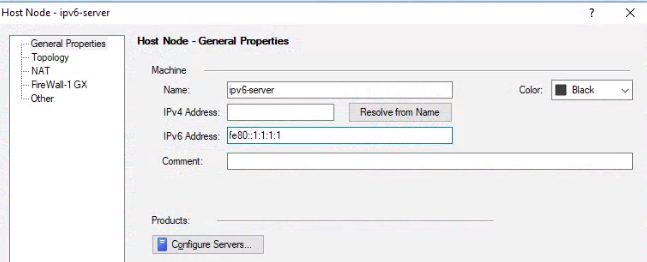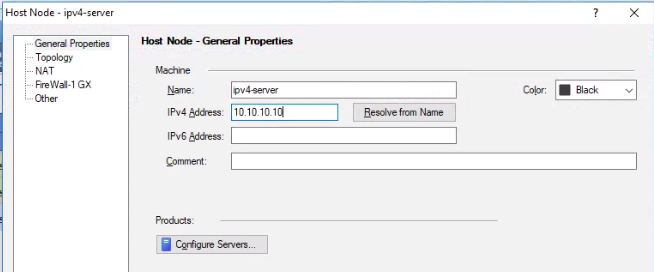- Products
Network & SASE IoT Protect Maestro Management OpenTelemetry/Skyline Remote Access VPN SASE SD-WAN Security Gateways SmartMove Smart-1 Cloud SMB Gateways (Spark) Threat PreventionCloud Cloud Network Security CloudMates General CloudGuard - WAF Talking Cloud Podcast Weekly ReportsSecurity Operations Events External Risk Management Incident Response Infinity AI Infinity Portal NDR Playblocks SOC XDR/XPR Threat Exposure Management
- Learn
- Local User Groups
- Partners
- More
This website uses Cookies. Click Accept to agree to our website's cookie use as described in our Privacy Policy. Click Preferences to customize your cookie settings.
- Products
- AI Security
- Developers & More
- Check Point Trivia
- CheckMates Toolbox
- General Topics
- Products Announcements
- Threat Prevention Blog
- Upcoming Events
- Americas
- EMEA
- Czech Republic and Slovakia
- Denmark
- Netherlands
- Germany
- Sweden
- United Kingdom and Ireland
- France
- Spain
- Norway
- Ukraine
- Baltics and Finland
- Greece
- Portugal
- Austria
- Kazakhstan and CIS
- Switzerland
- Romania
- Turkey
- Belarus
- Belgium & Luxembourg
- Russia
- Poland
- Georgia
- DACH - Germany, Austria and Switzerland
- Iberia
- Africa
- Adriatics Region
- Eastern Africa
- Israel
- Nordics
- Middle East and Africa
- Balkans
- Italy
- Bulgaria
- Cyprus
- APAC
CheckMates Fest 2026
Join the Celebration!
Quantum SD-WAN Monitoring
Register HereAI Security Masters
Hacking with AI: The Dark Side of Innovation
MVP 2026: Submissions
Are Now Open!
Overlap in Security Validation
Help us to understand your needs better
CheckMates Go:
R82.10 and Rationalizing Multi Vendor Security Policies
Turn on suggestions
Auto-suggest helps you quickly narrow down your search results by suggesting possible matches as you type.
Showing results for
- CheckMates
- :
- Products
- :
- General Topics
- :
- Re: IPv6 with Checkpoint R77.30
Options
- Subscribe to RSS Feed
- Mark Topic as New
- Mark Topic as Read
- Float this Topic for Current User
- Bookmark
- Subscribe
- Mute
- Printer Friendly Page
Turn on suggestions
Auto-suggest helps you quickly narrow down your search results by suggesting possible matches as you type.
Showing results for
Are you a member of CheckMates?
×
Sign in with your Check Point UserCenter/PartnerMap account to access more great content and get a chance to win some Apple AirPods! If you don't have an account, create one now for free!
- Mark as New
- Bookmark
- Subscribe
- Mute
- Subscribe to RSS Feed
- Permalink
- Report Inappropriate Content
IPv6 with Checkpoint R77.30
Hi,
I am testing scenario as per the customer requirement. It is migration of IPv4 to IPv6.
I want to test static NAT scenario (NAT64) where your external IP would be IPv6 and internal IP would be IPv4 so what are the steps required to configure in checkpoint R77.30. I am referring below URL but it would be helpful if there is a doc with configuration snapshot.
https://sc1.checkpoint.com/documents/R77/CP_R77_Firewall_WebAdmin/119030.htm#o119659
Regards,
Gaurav Pandya
11 Replies
- Mark as New
- Bookmark
- Subscribe
- Mute
- Subscribe to RSS Feed
- Permalink
- Report Inappropriate Content
NAT64 is translating an IPv6 address to an IPv4 one.
What you're describing is NAT46 (translating an IPv4 address into an IPv6 one).
No version of Check Point supports NAT46 currently.
- Mark as New
- Bookmark
- Subscribe
- Mute
- Subscribe to RSS Feed
- Permalink
- Report Inappropriate Content
Preferably I would like to handle this at layer 7.
Reverse proxies are among my most favorite machines for this purpose.
<< We make miracles happen while you wait. The impossible jobs take just a wee bit longer. >>
- Mark as New
- Bookmark
- Subscribe
- Mute
- Subscribe to RSS Feed
- Permalink
- Report Inappropriate Content
Hi Dameon,
Sorry as I have described like this. But our actual requirement is NAT64. Where outside IPv6 address want to communicate to the internal host which has IPv4 address.
It will be good if there is a good documentation with screenshot.
Regards,
Gaurav Pandya
- Mark as New
- Bookmark
- Subscribe
- Mute
- Subscribe to RSS Feed
- Permalink
- Report Inappropriate Content
You pointed to the documentation, it just didn't have pictures.
At the bottom of every document, there is a "Send Feedback" link, which I encourage you to use.
Meanwhile, I was able to create a rule that looks something like this:

The objects look like the following:



What I would encourage you to do is:
- Add each object to the rule as normal
- Only after you've assembled the rule, click on the Translated Source column, Select NAT Method, then select Stateful NAT64, translated packets will have "64" in them, as shown above.
- If you have gateways pre-R76 configured in your management, you may need to configure the Install On field to be explicit gateways, else you will get a policy install failure.
Hopefully that helps
- Mark as New
- Bookmark
- Subscribe
- Mute
- Subscribe to RSS Feed
- Permalink
- Report Inappropriate Content
Hi Dameon,
Thanks very much for your response.
Yes After some research, I did the same thing which you have mentioned. The difference is I have made static NAT.
Here, I have one question. May be it is silly but what we need to put in IPv6-server address (Destination Field). So IPv6 address has any relation with IPv4 address.
IPv6 address should be made from ipv4 address ?
My flow will be like
Any source address (ipv6) from outside --> hits to IPv6 address --> source IPv6 address will be translated to IPv4 address (Embeded range) --> Destination IPv6 address will be translated to IPv4 address 1.1.1.1
Please let me know if I am missing anything.
Regards,
Gaurav Pandya
- Mark as New
- Bookmark
- Subscribe
- Mute
- Subscribe to RSS Feed
- Permalink
- Report Inappropriate Content
Posting snapshot of my config.
- Mark as New
- Bookmark
- Subscribe
- Mute
- Subscribe to RSS Feed
- Permalink
- Report Inappropriate Content
If you look at my example above:
- The destination IPv6 address your users will connect to is represented by the ipv6-server object.
- This destination IP will be translated to the IP specified by ipv4-server.
- The source IP of the connection will be translated (HIDE NAT style) to one of the IPs in the IP Pool object called ipv6-hiderange.
Which is similar to what you said.
- Mark as New
- Bookmark
- Subscribe
- Mute
- Subscribe to RSS Feed
- Permalink
- Report Inappropriate Content
How does this apply to NAT64 Hide NAT. I want to translate an IPv6 source to a IPv4 source Hide NAT. Any ideas
- Mark as New
- Bookmark
- Subscribe
- Mute
- Subscribe to RSS Feed
- Permalink
- Report Inappropriate Content
So far I have not seen much use for NAT64.
I prefer to make sure vital components are dual stack. Like:
- Firewall
- Proxies
- MTA's
- Loadbalancers / reverse proxies
That way you can use either protocol internaly as you see fit. And you can use both on the outside. As I don't see how we will get rid of dual protocol for a few decades.
<< We make miracles happen while you wait. The impossible jobs take just a wee bit longer. >>
- Mark as New
- Bookmark
- Subscribe
- Mute
- Subscribe to RSS Feed
- Permalink
- Report Inappropriate Content
Palo Alto supports supports IPv6 NAT translation for /32, /40, /48, /56, /64, and /96 subnets using these prefixes. What does Check Point support in R77.30 and R80.20?
- Mark as New
- Bookmark
- Subscribe
- Mute
- Subscribe to RSS Feed
- Permalink
- Report Inappropriate Content
Hi Steve,
I have only tested above scenario in R77.30. There is more IPv6 support in R80.20
You can refer sk39374 for more information
Leaderboard
Epsum factorial non deposit quid pro quo hic escorol.
| User | Count |
|---|---|
| 18 | |
| 5 | |
| 5 | |
| 4 | |
| 3 | |
| 3 | |
| 2 | |
| 2 | |
| 2 | |
| 2 |
Upcoming Events
Thu 22 Jan 2026 @ 05:00 PM (CET)
AI Security Masters Session 2: Hacking with AI: The Dark Side of InnovationTue 27 Jan 2026 @ 11:00 AM (EST)
CloudGuard Network Security for Red Hat OpenShift VirtualizationThu 12 Feb 2026 @ 05:00 PM (CET)
AI Security Masters Session 3: Exposing AI Vulnerabilities: CP<R> Latest Security FindingsThu 26 Feb 2026 @ 05:00 PM (CET)
AI Security Masters Session 4: Powering Prevention: The AI Driving Check Point’s ThreatCloudThu 22 Jan 2026 @ 05:00 PM (CET)
AI Security Masters Session 2: Hacking with AI: The Dark Side of InnovationTue 27 Jan 2026 @ 11:00 AM (EST)
CloudGuard Network Security for Red Hat OpenShift VirtualizationThu 26 Feb 2026 @ 05:00 PM (CET)
AI Security Masters Session 4: Powering Prevention: The AI Driving Check Point’s ThreatCloudAbout CheckMates
Learn Check Point
Advanced Learning
YOU DESERVE THE BEST SECURITY
©1994-2026 Check Point Software Technologies Ltd. All rights reserved.
Copyright
Privacy Policy
About Us
UserCenter


